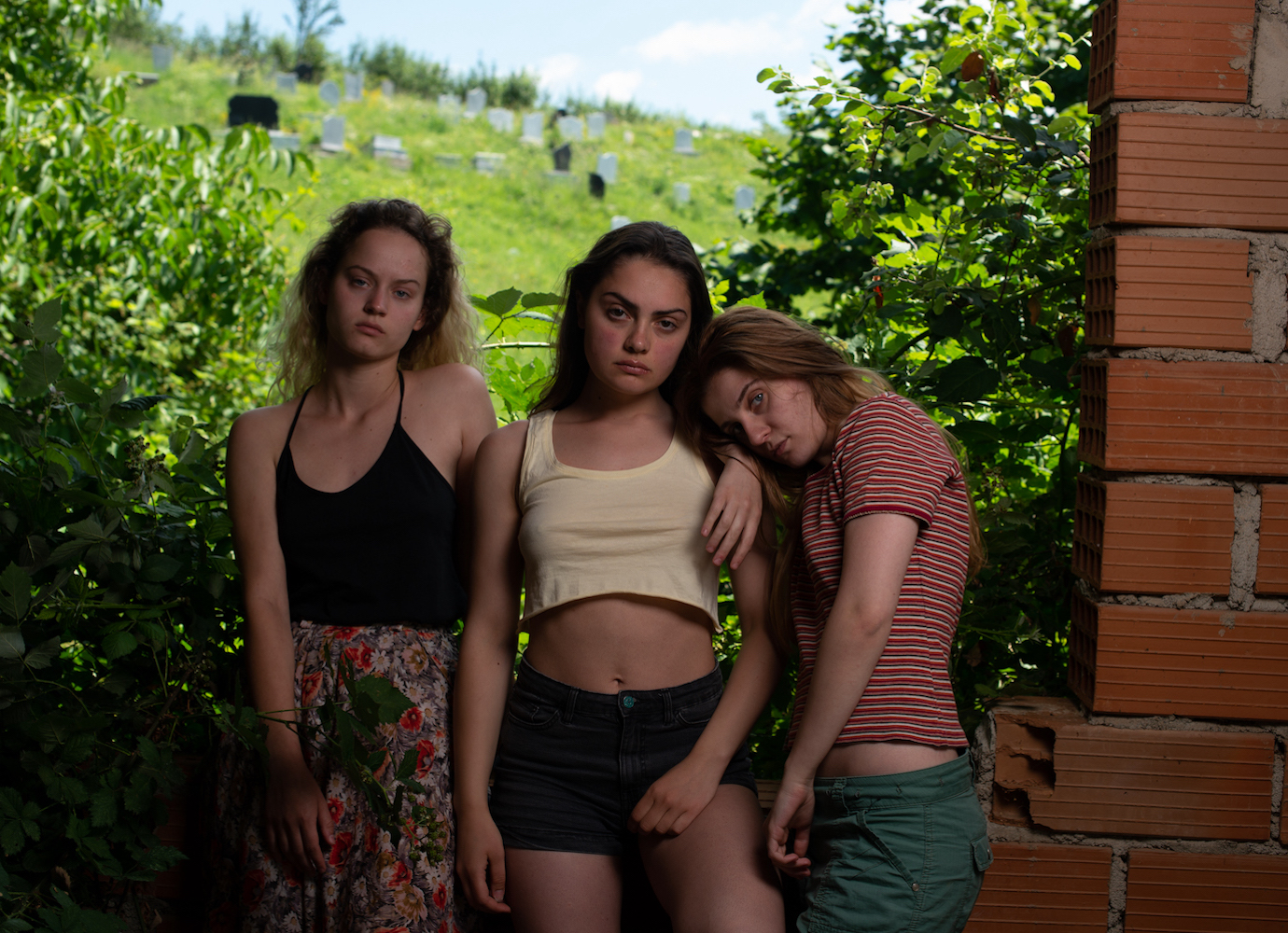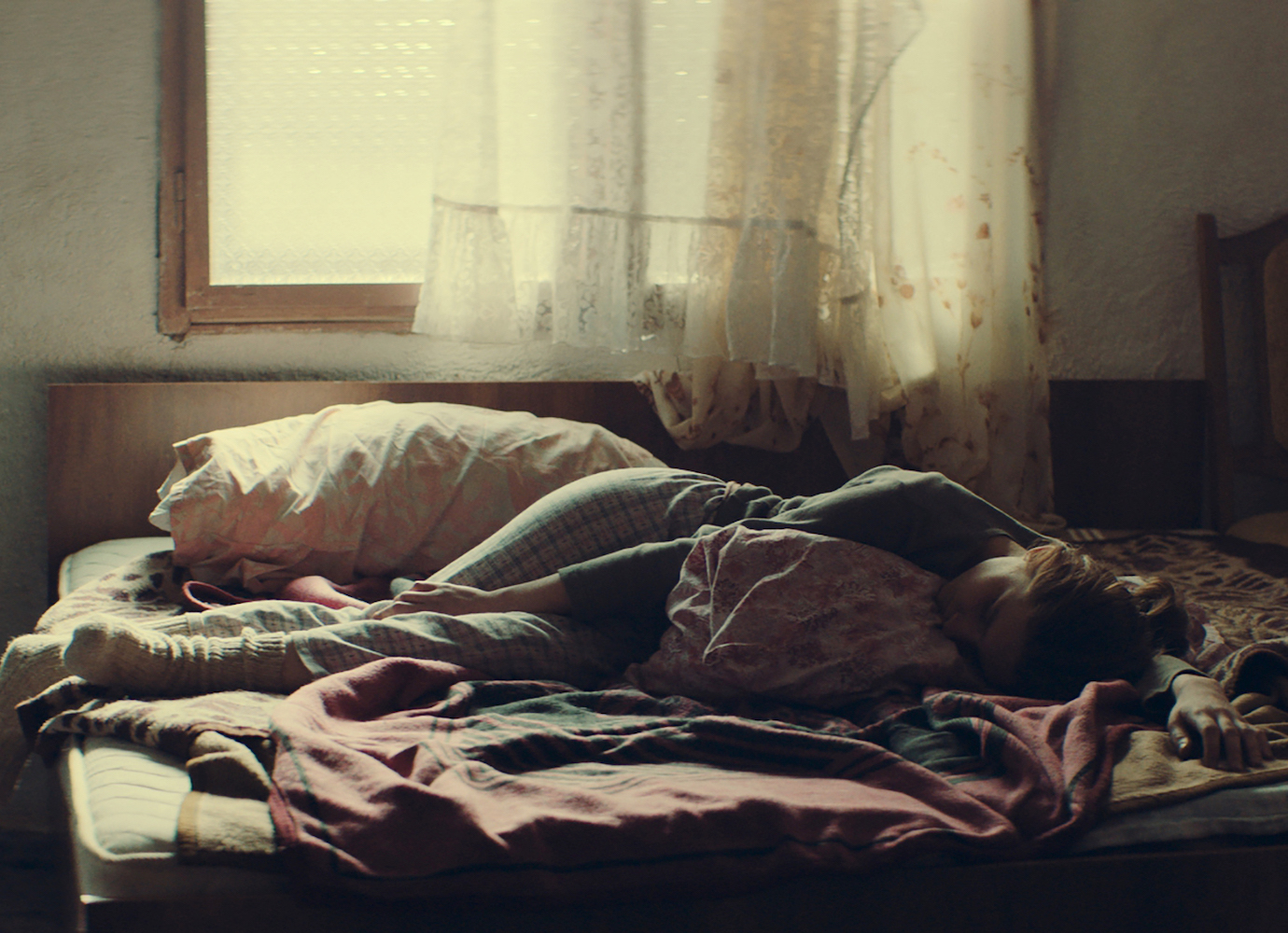The Hill Where Lionesses Roar: in Kosovo, a teenage trio fight for freedom

Premiering at this year’s Cannes Film Festival, Luàna Bajrami’s ambitious directorial debut is a coming-of-age story of fierce sisterhood in a small Kosovan village.
At the tender age of 20, Luàna Bajrami is making her directorial debut at Cannes Film Festival’s with a heartfelt ode to youth: The Hill Where Lionesses Roar. The French-Kosovan filmmaker and actress, known for her stirring performance as a young maid in Céline Sciamma’s Portrait of a Lady on Fire, returns to her native Kosovo village of Pleshina with a fiery story of female emancipation and youthful freedom.
Spending languid days dreaming about a future far away from their hometown, leader Qe (a blazing breakout from Flaka Latifi), optimistic Li (Era Balaj), and reticent Jeta (Urate Shabani) are three perfectly cast “lionesses”: endlessly persistent, and united by their hunt for independence. Then, one day, they turn to petty crime in their feverish desire to buy themselves a ticket out of Pleshina when all other avenues seem blocked. This timeless tale of jubilant youth juxtaposed against the placid, provincial Kosovan village, results in an intense, slow-burn drama that pays an unfailingly human tribute to female friendships.
“The film is set in Kosovo, but the story is universal,” Bajrami told The Calvert Journal. “I wanted to make a film I would’ve loved to see at 15-years-old.” Her pairing of classic coming-of-age nuance and sharp analysis of the constraints placed on young Kosovar women infuses every frame of The Hill Where Lionesses Roar with a raw and insightful authenticity.
Bajrami was inspired to create The Hill Where Lionesses Roar at the end of her own teenage years: “I had an idea of a scene with three girls screaming on top of the hill, but we don’t hear them. I often talk about [The Hill Where Lionesses Roar] as a flame, linking it to Portrait of a Lady on Fire, and back then, that idea was really growing in me.”
The fledgling filmmaker navigates the young women’s struggle between their ambitions and their circumstances within the dynamics of sisterhood, protection, and loyal togetherness. The film is plagued with lion-edged symbolism, as the main characters frantically claw for a future away from the boredom of their stagnant village. For Bajrami, the lioness is a totem animal: “I talk about the lioness but not the lion. I think it’s such a powerful animal; it lives by itself but also manages to be in a crew.” Similarly, in the dead of night, driven by bouts of euphoria, the girls’ robberies play out in electric heist-style sequences where they hunt like a pack. Giggling in Bajrami’s highly contrasted scenes, Qe, Li, and Jeta appear like sparks of dancing light against the dark Kosovan village.
Cinematographer Hugo Paturel, who is also making his feature debut alongside Bajrami, builds the world of the “lionesses” through their young, female gaze. Beginning with wide observational shots that see the girls embedded within their wild landscape, the camera moves closer and tracks them intimately. One shot, in particular, involving a confrontation with Qe’s family, is shot through an open window. A frame within a frame, the scene is a literal window into the young woman’s family life, but the walls of the house block most of the action. “What I like is when you don’t show [the action], it makes it more powerful because you just imagine it,” Bajrami says about the composition of this scene. Throughout the film, adults remain on the periphery, and the director muses that the centralisation of youth allowed the film: “to be more personal, in a way. I wanted the film to be one where everybody can identify themselves in it.”
This anger, I feel like we all have it inside of us. [The film] was a great way to express it and to say “yes, we’re angry”, with young women’s voices
“I grew up in this town, and wanted to film it with so much love. Maybe it goes back to my childhood gaze,” the director says. Her natural affinity for this remote village translates into wide, static establishing shots that capture Kosovo’s stunning mountainous landscape. Overlooking the village they have outgrown, the trio make their headquarters on a hill. Bajrami notes: “the hill became a character of the film. She knows what is going to happen, but the girls don’t yet.” This personification of the landscape is both bewitching and a subtle examination of Kosovo’s encased youth. As Bajrami points out, Kosovars often can’t leave without a visa, and this remains one of the heroines’ key obstacles in their journey to freedom. The same issue is visualised in Bajrami’s tightly composed shots, framed “like a cage, a prison for the girls. They seem to be free, but they are imprisoned by the frame.”
Bajrami’s eye for capturing the restlessness of young womanhood and the feeling of frustration boiling over into rage is exquisite. “My ambition was to show that you have to find a solution. This anger, I feel like we all have it inside of us. [The film] was a great way to express it and to say ‘yes, we’re angry’, with young women’s voices,” Bajrami says. Honing in on anger brings fresh air to the indie coming-of-age theme. The Hill Where Lionesses Roar marks an exciting directorial chapter in Luàna Bajrami’s career, where she’s proven to be a promising talent both in front of and behind the camera.


